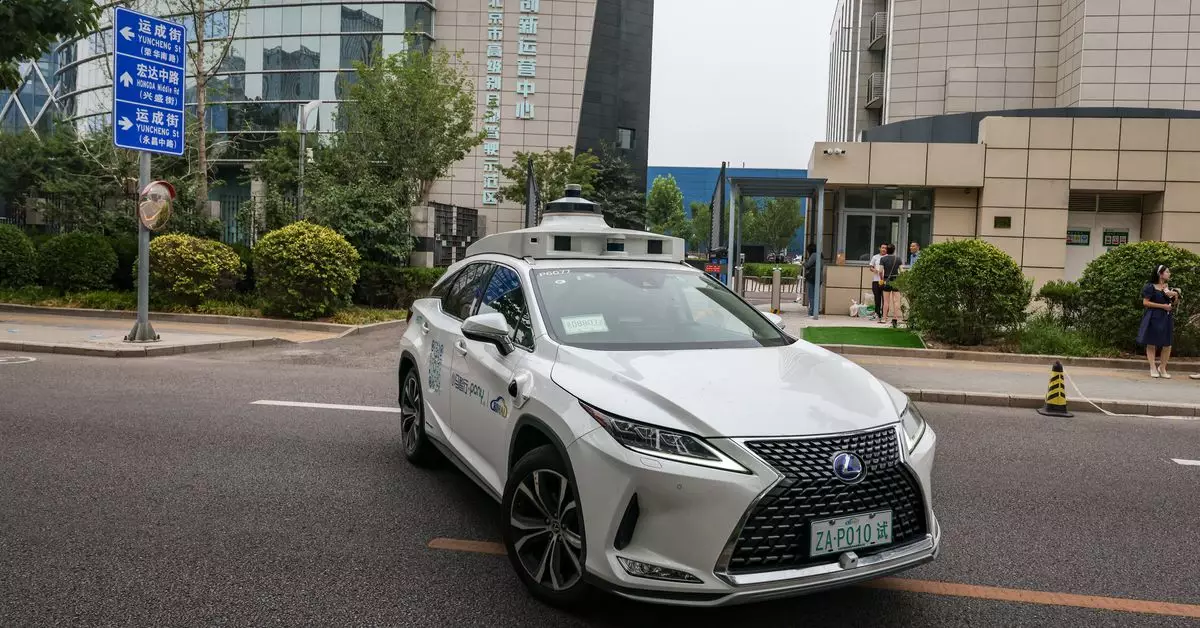The realm of autonomous vehicles (AVs) is marked by a fierce competition that highlights a stark contrast between the United States and China. As advancements in technology propel the race toward driverless transportation, both nations grapple with unique challenges and opportunities. Notably, recent developments have underscored the divergent paths taken by major players in this field, particularly the precarious situation of American firms compared to the audacious goals set by their Chinese counterparts.
The Chinese AV landscape is characterized by an aggressive push towards expansion, exemplified by Pony.ai’s recent announcement to ramp up its robotaxi fleet significantly. With plans to increase its operations from approximately 250 to 1,000 vehicles by 2025, Pony.ai is poised to capitalize on a booming market. Supported by a partnership with GAC Aion, an offshoot of one of China’s largest automotive manufacturers, Pony aims to extend its reach into key urban areas, including Beijing and Shanghai.
The company’s current operations reflect a healthy usage rate, averaging 15 rides per vehicle daily. This equates to around 26,000 rides weekly, showcasing a sustainable model that leverages a favorable regulatory environment. The Chinese government’s supportive stance, coupled with vast resources and affordable electric vehicle (EV) production, creates a fertile ground for rapid proliferation in the AV sector. Moreover, the competitive landscape includes Baidu, another prominent player, which is working to reduce vehicle costs to make autonomous transport more accessible, signaling a robust momentum behind these initiatives.
In sharp contrast, American companies are navigating a significantly more challenging terrain. General Motors recently announced its decision to halt funding for Cruise, its self-driving subsidiary, which reflects broader difficulties in the U.S. market. Ford’s shuttering of its Argo AI division further underscores the retreat from ambitious robotaxi projects initially fueled by partnerships with major firms like Volkswagen.
Both GM and Ford are now pivoting their focus towards enhancing driver-assist technologies for conventional vehicles, marking a departure from the once-enthusiastic aspirations for robotaxis. This shift represents a retreat from the frontline of innovation into a safer, more familiar territory, highlighting a cautious approach driven by mounting financial pressures and uncertain market dynamics.
The tense geopolitical landscape complicates the U.S. automotive industry’s position in the global market. As the Biden administration takes a firm stand against potential threats posed by Chinese technological advancements, proposed regulations aim to block the import of connected vehicle software from China on national security grounds. This move, alongside new tariffs on EVs and related components, indicates an escalating trade war that could stifle American innovation in the AV space.
The implications of these protectionist policies are far-reaching, potentially hindering the development of homegrown autonomous technologies. The ramifications could extend to companies like Waymo, who are looking to leverage lower-cost Chinese EV platforms but must navigate a maze of tariffs and restrictions that could undermine their operational viability.
Beyond geopolitical tensions, regulatory challenges further complicate the U.S. landscape for AVs. Despite calls for a cohesive federal framework to streamline the deployment of driverless vehicles, legislative progress remains stagnant. Disagreements abound concerning the volume of AVs permissible on public roads, establishing standards, and addressing liability issues, all while local authorities, such as those in San Francisco, voice concerns over congestion and safety stemming from robotaxi operations.
Public sentiment plays a pivotal role in shaping regulatory environments as concerns about safety and urban infrastructure emerge. These community objections serve as significant roadblocks to swift robotaxi deployment, further entrenching the divide between the ambitious goals of Chinese companies and the hesitancy demonstrated by U.S. counterparts.
The trajectory of robotaxi development showcases a profound bifurcation in approaches taken by the United States and China. While China accelerates towards a future dominated by autonomous travel, American players grapple with internal challenges and external pressures that stymie progress. As the AV industry evolves, the question remains: can the United States overcome its regulatory and political hurdles to sustain its competitive edge in the global race for robotaxis? The stakes are high, and the future of mobility may very well depend on how these two giants navigate the ever-shifting landscape of technology, safety, and public perception.


Leave a Reply